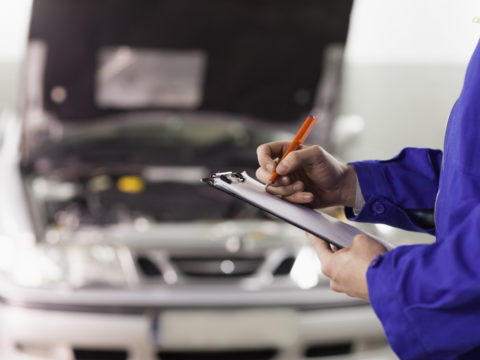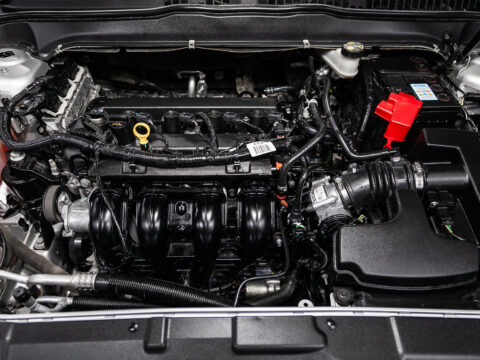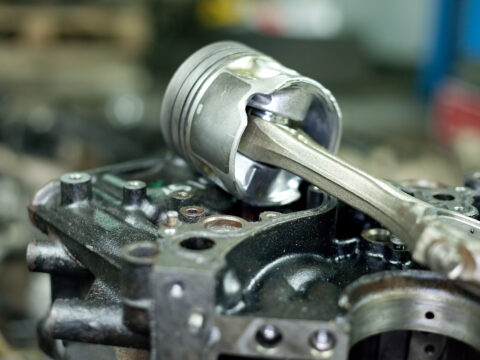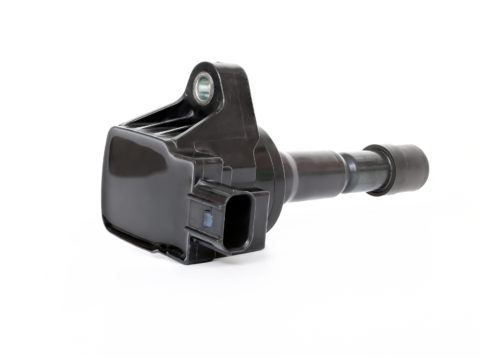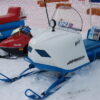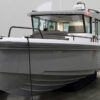There are many critically important parts and systems on a car, and the water pump qualifies as both.
Water pump failure can be catastrophic because failure can result in more than simply an overheating engine.
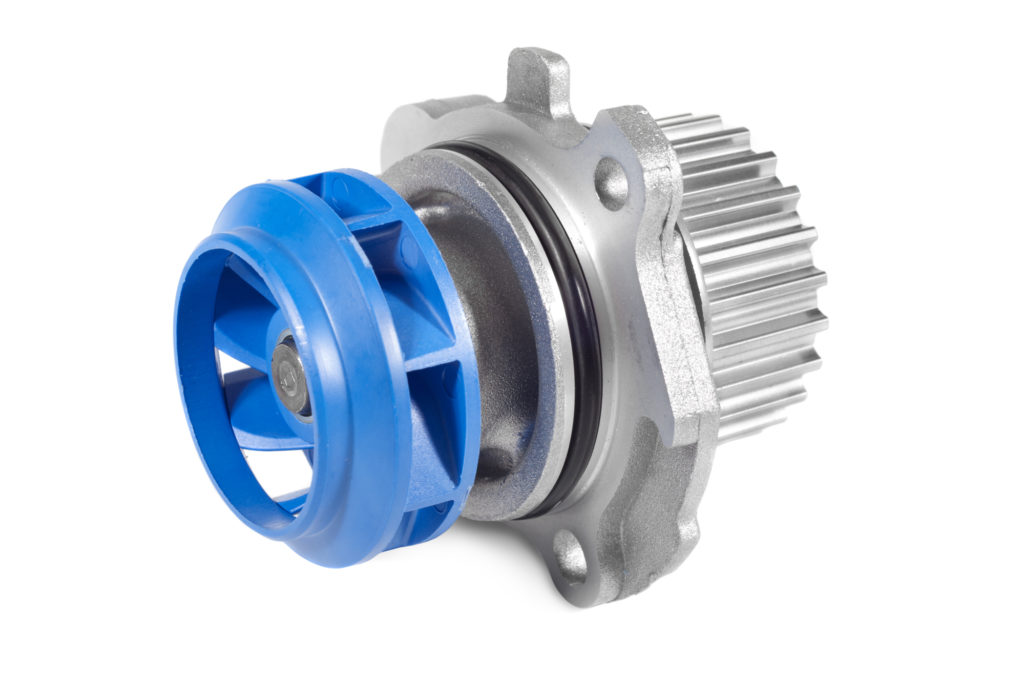
Watch out for these 7 things if you want to prevent a disaster from happening.
Contents
How Does a Water Pump Work in a Car?
To best visualize what a water pump does and means to a car, think of it as the car’s heart.
Like most parts in the engine compartment, the water pump is belt-driven and thus relies completely upon the engine’s crankshaft and the serpentine belt as its power source. This is important as the concept and the function of a water pump is to be the centrifuge for the vehicle’s cooling system. The hub of movement and flow.
The water pump pulls the cooled coolant out of the radiator and into the pump’s core, the centrifuge. Once there, the water pump shoots the coolant into the vehicle’s engine where it will eventually end up back in the car’s cooling system.
The cooling system is a closed and self-contained system which is why any coolant leaks essentially result in system failure.
Water Pump Failure Symptoms
The water pump is constantly operating while the car is running. In fact, the engine’s ability to run is directly connected to a functioning water pump. So, waiting for your engine to lock up is not a sign of water pump failure, but that you missed all the other symptoms and waited too long to remedy the situation.
Some of the signs of a failing water pump don’t even require you to look under the hood to know there is an issue with the water pump.
These are the 7 most common signs to watch out for to identify that you have impending water pump failure.
Engine overheating
This is always the first and most reliable sign that there is an issue developing with the water pump. The water pump’s main function is to prevent engine overheating. So, if the temperature gauge is showing an overheated engine, you need to check the water pump.
Fluctuating engine temperature
A failed water pump will show an overheated engine that never cools down on the temperature gauge. A failing water pump will show a temperature gauge in which the engine bounces between running at normal temp and an overheating engine.
Whining Sound
Water pumps have several moving rotary parts and if they are damaged or defective the pump’s operation will result in a whining sound. A loose water pump pulley that is connected to the drive shaft inside the pump tends to be the issue.
White smoke from the radiator
Water pump failure will result in white smoke. This can be from the exhaust pipe, but there are several things that can cause this to occur. However, white smoke from the radiator is a definite water pump issue.
Coolant deposits or rust
The coolant that circulates throughout the car’s cooling system is actually a combination of two liquids. The coolant is a mixture of coolant and water. Though most of the outside of today’s cars are made of plastic, most of the inner workings are still metal.
Metal tends to rust over time, particles or deposits of rust can end up in the coolant. The contaminated coolant will eventually hinder and affect the pump’s impeller shaft or driveshaft leading to a damaged belt, bearings, or chains.
A loose belt
Because water pumps are belt-driven when they go bad they affect everything that is connected to them, including the belt. A loose serpentine belt or even a timing belt can result from a bad water pump.
Coolant leaks
I left the most obvious and common sign for last. Basically, this is a no-brainer. Bad water pumps fail to circulate coolant in the correct amount. They will either send too much through the system or not enough.
Too much will cause stress on the system and hoses which results in a small hole, known as a weep hole.
Too little and the hoses can dry out from the heat, and this will also cause a weep hole or cracks to develop.
The inevitable result is a leak.
Even if you don’t see a leak if you are constantly adding coolant that means there is a coolant leak somewhere, as the cooling system is closed and does not need to be filled regularly.
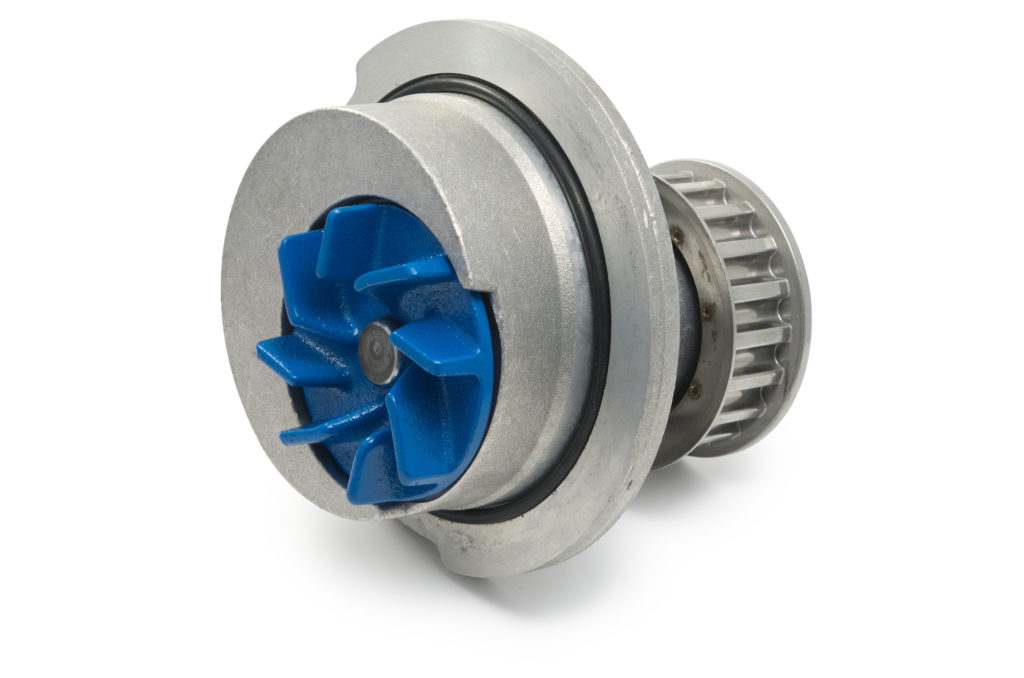
What Causes a Water Pump to Go Bad?
So, those are the most common signs of impending trouble. But, how do you get to this point in the first place if water pumps can last for 100,000 miles?
Assuming the correct coolant is always used, these are the 4 most common reasons why a water pump fails.
Bad seal
There is a seal between the engine block and the water pump that is solely there to prevent coolant from leaking. It is also designed to keep air from entering the system. There are 3 main reasons for this seal to fail:
- Installed wrong
- Coolant is corrosive
- The car has been sitting for a while
Broken or bad belt
As the water pump directly relies upon the belts to work correctly, a broken or defective belt will have a domino effect on the water pump.
Drive pulley is loose
The water pump pulley is central to its operation. If the pulley is loose and or wobbling, it will create vibrations. Those vibrations will cause the pulley bearings to wear faster resulting in failure.
A wobbling water pump pulley will also put stress on the impeller and cause it to spin in an unbalanced manner.
Corrosion
Corrosion is the most difficult to identify but is a leading cause of a car’s water pump failing. This issue begins with a basic mistake of using the wrong coolant. It is imperative to always use the correct coolant. The wrong coolant, mixing coolant with other things, such as tap water, or simply not properly maintaining the cooling system results in corrosion.
This corrosion infects the entire cooling system and will begin to degrade all the seals and parts. Specifically, this will:
- Degrade the seal between the water pump and engine block
- Corrode the impeller
- Simply make the pump leak
The biggest problem with corrosion is you typically won’t know that it’s an issue until you need to replace the water pump.
How Long Does a Car Water Pump Last?
The reason that water pump failure is most commonly found in older cars is that most water pumps are built to last for what is typically the first ownership cycle of a new car. With that said, every part will fail at some point for some reason. A water pump should be expected to get between 60,000 and 90,000 miles prior to any potential failure; very much like a timing belt.
Though this is a direct result of the build quality of the water pump. Cheaper models have been known to leak as early as 30,000. While water pumps with great quality have lasted as long as 100,000 miles.
Can a Water Pump Be Bad and Not Leak?
Other than factoring in the possibility that anything is possible, a bad water pump will inevitably leak coolant. Most of the symptoms that are more easily to notice, typically occur as a result that your water pump has a leak resulting in an ineffective cooling system.
Can You Repair a Leaking Water Pump?
There are a lot of problems with a car that can simply be patched up and made better. This is not one of those problems. Water pumps are not parts that are built or designed to be repaired. If you have a bad water pump, you should have the water pump replaced immediately.
How Far Can You Drive With a Bad Water Pump?
While driving with a bad water pump is not recommended, you can reasonably expect to be able to drive between 5 and 20 miles before you would run the risk of having an overheating engine and a potential complete engine failure.
Car Water Pump Replacement Cost
The cost of replacing a water pump varies greatly depending upon the specific make and model of the car, the car’s age, the size of the car, and your location. The cost tends to range as low as $300, but can be as high as $800. However, in most cases, you can expect to pay, on average, around $550 to have the water pump replaced.

